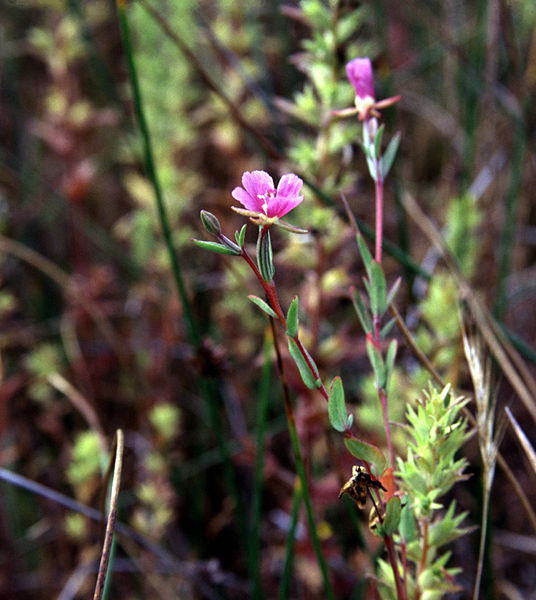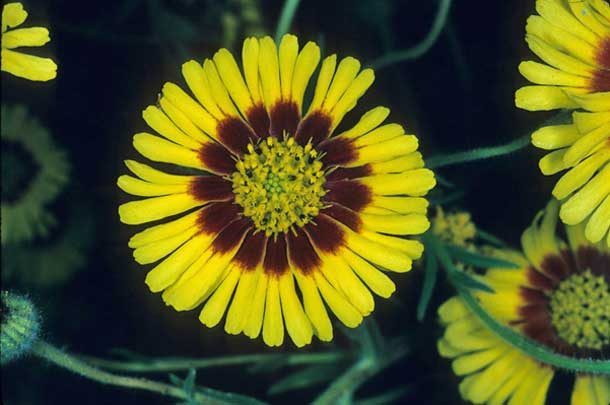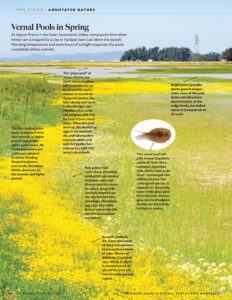As many a plain Jane turned prom queen will attest, blooming late can have its rewards. But there are also significant challenges to plants that flower later in our summer-dry climate. While blooming at a time when fewer flower species compete for pollinators means more attention for the late bloomers, it also means fewer pollinators overall, as some short-lived insects complete their life cycles by early summer. And for a small annual plant that lives and dies in a season or two on a small root system, living for months without rainfall requires special adaptations.
- Winecup clarkia. Public domain USFWS image.
Some plants persist beyond spring by growing in habitats that moderate summer conditions. Seep monkeyflower lives in wet places along streams and in small springs that stay moist through the dry season. Other plants survive summer with physiological adaptations that help them hold onto scarce water. Tarweeds are coated with a resinous “tar” that forms a barrier to water loss, and clarkias have narrow, widely spaced leaves and therefore less surface area from which water can evaporate.
Late-blooming flowers are an important nectar source for pollinators like hummingbirds and migrating butterflies in the summer and fall. But they’re also often the only nonwoody plants still showing green in our golden grasslands, and thus they are tempting morsels for hungry insects and other animals. So some late bloomers have strongly scented vegetative parts that deter animals looking for a meal. Common names like skunkweed and vinegarweed attest to their pungent odors.
Although you won’t find late-blooming plants in the showy profusion of spring wildflowers, they are nonetheless lovely reminders of the amazing adaptability of nature.
Here are some late bloomers to look for around the Bay Area.
Elegant tarweed or common madia (Madia elegans): With an amazingability to withstand summer drought in the hottest Bay Area habitats,this slender, delicate-looking plant blooms with showy yellowdaisy-like flowers.
Clarkia (various species in the genus Clarkia): Also known as farewell-to-spring for its late start in blooming, this graceful, bright pink annual wildflower lights up open, dry areas through July.
Seep monkeyflower (Mimulus guttatus): You’ll find thismoisture-loving, lush green perennial with profuse, bright yellowflowers growing along streams or in moist seeps that are protected fromthe intense summer sun.
Vinegarweed (Trichostema lanceolatum): Growing in open, disturbed places like roadsides, this 1- to 2-foot-tall plant bears elaborate lavender flowers in midsummer through fall and has a potently sour odor that can permeate the area where it grows.

.jpg)





